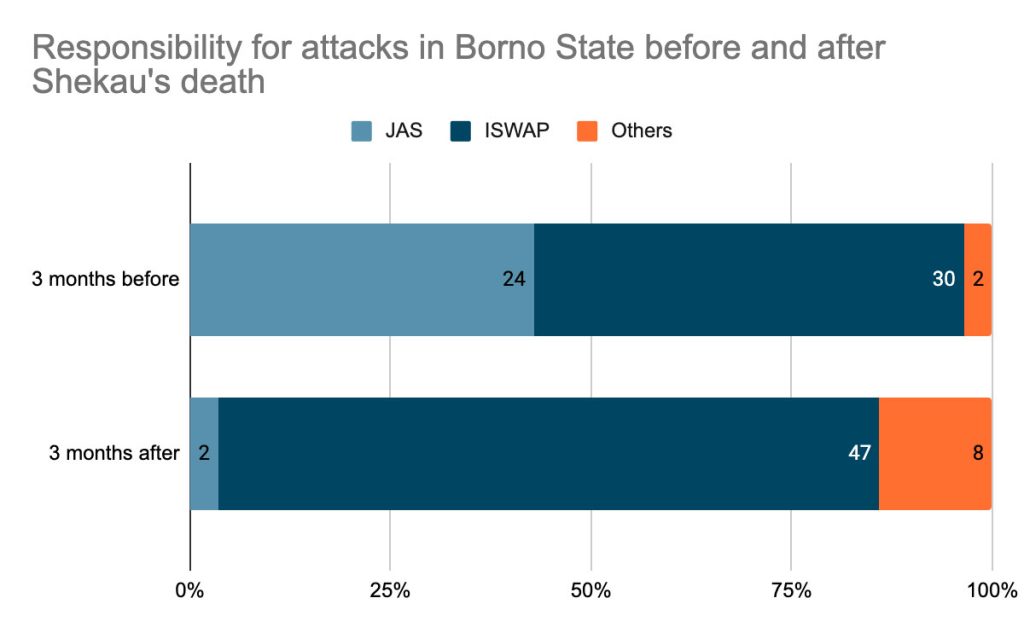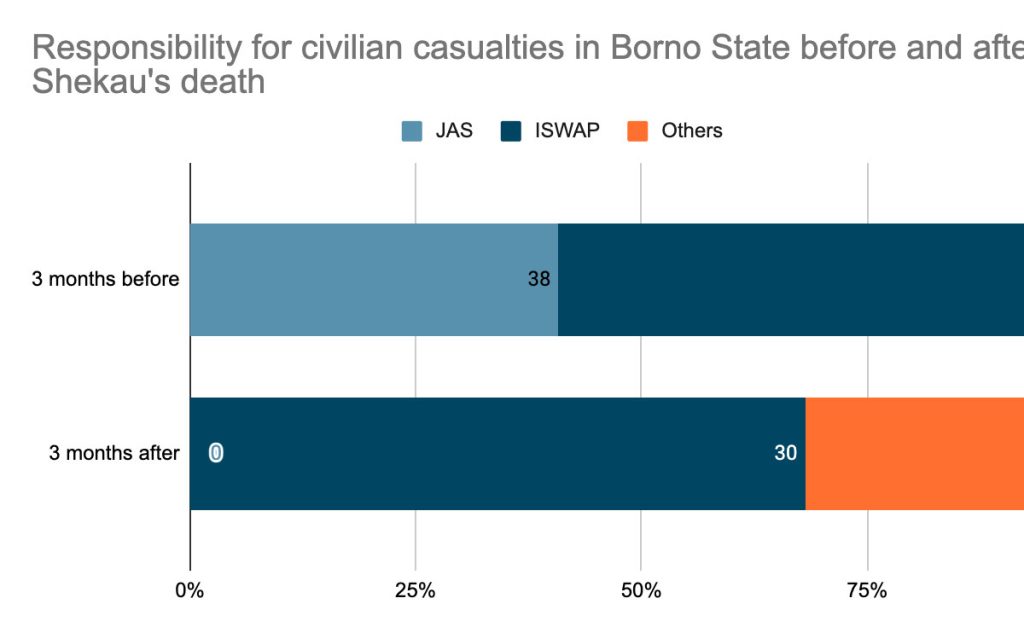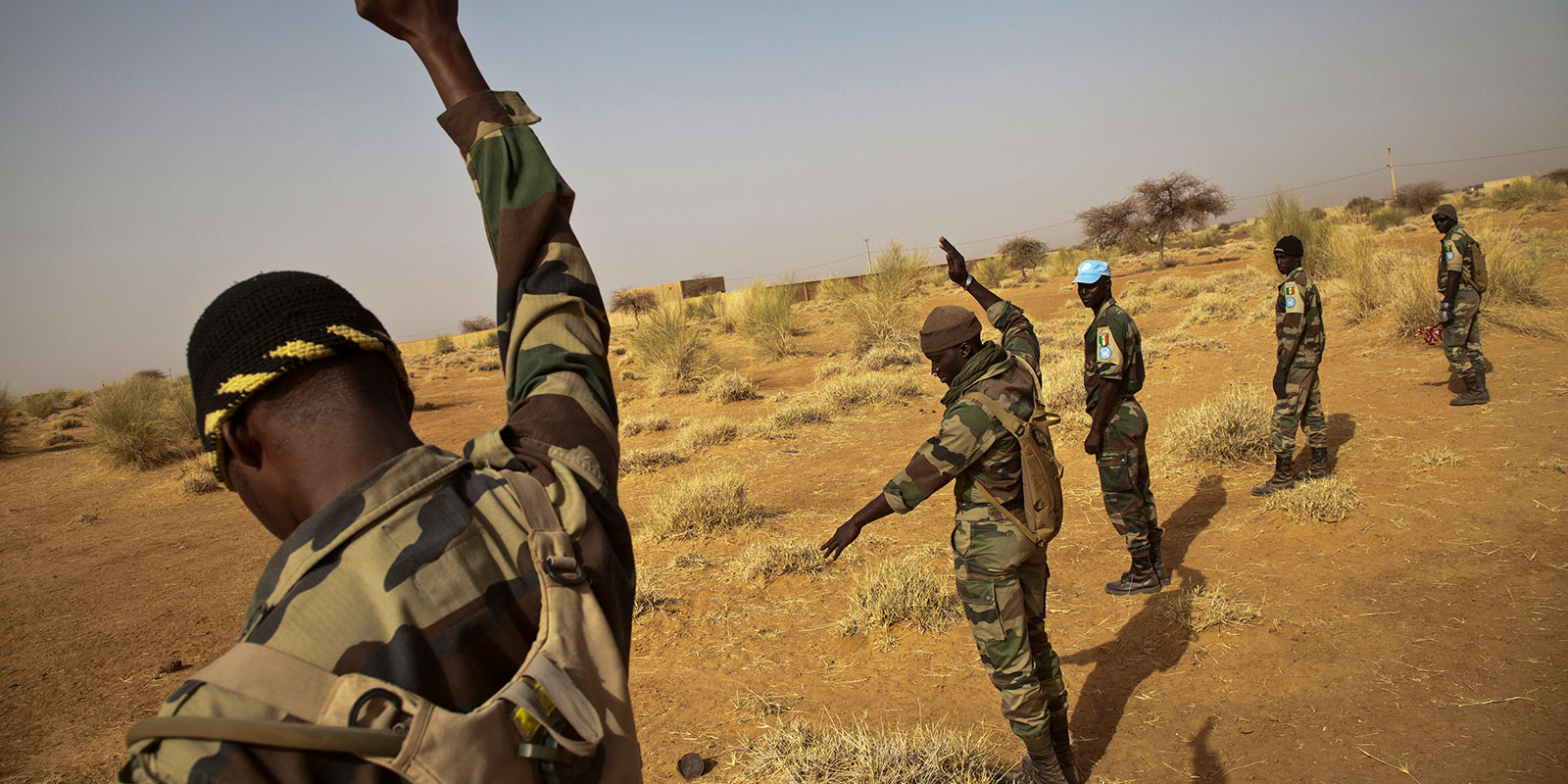Insecurity in the Lake Chad Basin has remained a matter of concern for both international and local actors. The Boko Haram insurgency, which started in Nigeria, has gradually transformed into a regional conflict affecting communities across the four countries of the Lake Chad Basin region. Therefore, what began as a domestic war on terror in Nigeria has now scaled up into a sub-regional effort to end the insurgency by both national forces and the regional Multinational Joint Task Force.
Although the outlook in the region still looks grim, infighting among violent extremist groups in the Lake Chad Basin has created a window of opportunity for stabilisation
Tweet
Emerging Dynamics
The passing of Abubakar Shekau in May 2021, the long serving leader of the Jama’atu Ahlis-Sunna Lidda’Awati Wal-Jihad (JAS) faction of Boko Haram, sent shockwaves across the sub-region and the international community.
The news was a sign of optimism for some, but for others, it elicited caution as the dynamics at play are much different. Shekau’s death was not an incident caused by the actions of domestic or international security forces, neither were the circumstances surrounding it “natural”. His death was the act of a rival faction and offshoot of Boko Haram, the Islamic State West Africa Province (ISWAP).
Shekau oversaw the violent rise of Boko Haram to one of the world’s deadliest violent extremist groups. The resulting insurgency has displaced more than two million people, aggravated the loss of livelihoods, and led to the emergence of a severe humanitarian crisis, among other consequences. Since 2011, more than 40,000 deaths were recorded in Nigeria’s Borno, Adamawa and Yobe States alone.
However, a new trend is emerging.

The near cessation of attacks against civilians and the surge in attacks targeting security forces has been a feature of the current post-Shekau era and ISWAPs ascendancy. Three months before Shekau’s death, JAS was responsible for approximately 43 percent of attacks in the epicentre of the crisis in Borno State, Nigeria. The attacks resulted in 38 civilian deaths.
However, three months after his death, JAS was responsible for approximately only 4 percent of attacks in the state with no civilian casualties. One such attack was a highway robbery less than two weeks after Shekau’s death. The second was an attack on security forces by fighters fleeing from Sambisa in August.

Amid the chaos, ISWAP, noticing the vacuum created by the death of Shekau, seized the opportunity to move in and present itself as the most prominent violent extremist group in the region, and has deepened its relationship with the Islamic State (IS), thus making itself a global threat and expanding the network and reach of such groups. It has also leaned on the guidance of the Islamic State (IS) to reorganize itself, ramped up efforts to establish four semi-autonomous provinces and expand its territories.
While ISWAP has tried to resist increasing military operations and recorded some degree of success, things may not be going smoothly for the group as anticipated following Shekau’s death. ISWAP is finding it challenging to recruit JAS fighters to its ranks. Since taking over JAS’ former territories, especially areas in and around Sambisa Forest, there have been waves of mass disengagement of both civilians and fighters. The fighters, loyal to the late leader, opted to surrender to security forces rather than join ISWAP. This has unexpectedly rattled ISWAP into launching reprisals against the fleeing fighters, who are fighting back. Uneasiness within ISWAP has also led to internal skirmishes due to factionalism within the group. It is increasingly evident that with its attack on Sambisa, ISWAP may have spread itself too thin.
A window of opportunity
The intra- and inter-group subtleties within the region have created a window for military success and stabilisation interventions as different actors seek to gain an unassailable edge against Boko Haram.
Through the Regional Strategy for the Stabilisation, Recovery and Resilience (RSS) of the Boko Haram affected areas of the Lake Chad Basin Region actioned in 2018 by the Lake Chad Basin Commission and the African Union, nine pillars have been established to guide the transition from war to peace in the region.
The strategy aptly responds to evolving trends in the region that are underscored by three interconnected imperatives. First, to build state interaction with communities, especially at the rural level; second, to improve security and livelihood conditions in these communities; and third, to successfully manage the ongoing mass disengagements from Boko Haram.
The strategy invites diverse actors to support its implementation. This has led to significant buy-in from the LCB Member States, and the governors of the affected territories who have developed locally focused Territorial Action Plans (TAPs) for each territory, illustrating the interest and ability of communities in driving interventions that affect them.
Beyond state and community level commitments, partners like UNDP, seeing the relevance of the strategy in responding to the challenges faced by the region, developed the Regional Stabilization Facility (RSF) in 2019, with support from Germany, Sweden, the European Union (EU), the United Kingdom (UK), the Netherlands, and the African Development Bank (AfDB).
The Facility supports the rehabilitation of essential infrastructure, health facilities, schools and housing. It also pays critical attention to the climate vulnerability of the region by supporting environmental protection practices through the rehabilitation of forest protection offices and capacity building on climate-friendly practices. Additionally, the Facility enhances livelihood and security conditions in the region.
Importantly, the recent spate of surrenders provides an opportunity for the LCBC to support member states with a rehabilitation, reconciliation and reintegration process that is comprehensive, harmonised and consistent with local realities and specifities. At the recent concluded third Lake Chad Basin Governors Forum which took place from 4-5 October in Yaounde, Cameroon, the Governors called for coordinated efforts in the managing of the reintegration of ex-Boko Haram associates.
Ultimately, though the outlook in the region still looks grim, signs point towards progress – and our interest and those of partners is to build on those gains until a peaceful and sustainable Lake Chad Basin is realised.
Dr. Chika Charles Aniekwe is the Senior Advisor and Head of Stabilisation for the UNDP/LCBC Lake Chad Basin Regional Stabilisation Strategy. Malik Samuel is a researcher with the Institute for Security Studies



